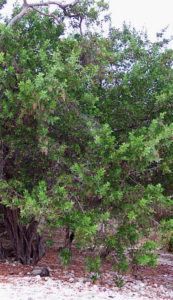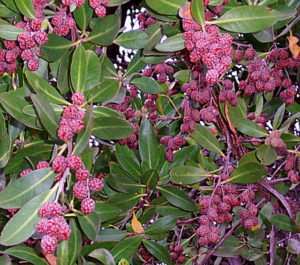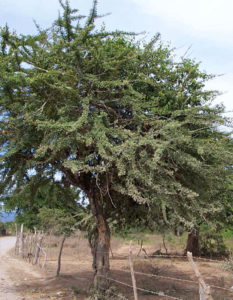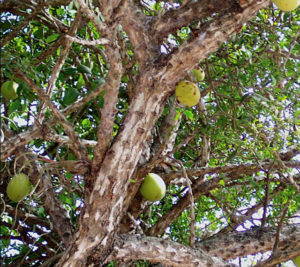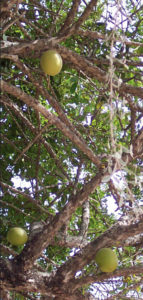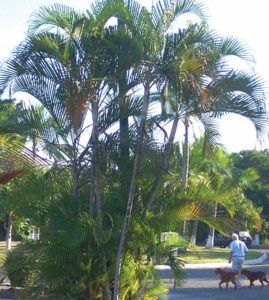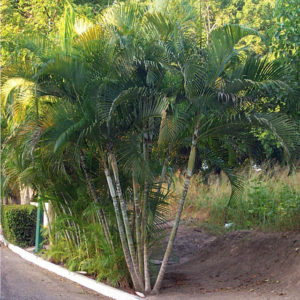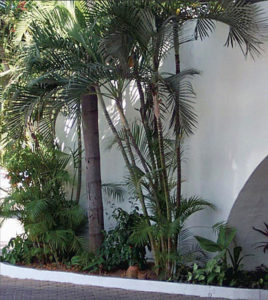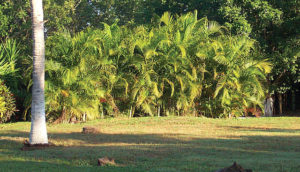Three beautiful options for your tropical garden in Mexico are the buttonwood, calabash and butterfly palm.
Buttonwood (Conocarpus erectus)
Family: Combretaceae
Alternate Name: Button Mangrove
Use: Both the green and silver (C. erectus sericeus) varieties are available as ornamental trees, and have been cultivated as bonsai. The heavy wood is durable, taking a fine polish, and is used for boats and maritime construction, as well as for pilings and firewood. The bark is used for leather tanning, and the leaves and other plant parts have medicinal uses as well.
Flowers: The many small cuplike flowers are greenish, have five lobes, and appear in a ball shape. The fruit clusters are red to purple, and look very much like frosted raspberries.
Cultivation: This wide-ranging tree with its spreading crown grows in a variety of tropical and subtropical climates, usually in brackish or saline silts, on shores, marshes, and stream banks. It tolerates salt and a range of temperatures and abundant or scarce water. It grows in wet soil and in hard packed sand.
Propagation: The button mangrove can be propagated from seed, with high germination rates.
Calabash (Crescentia cujete)
Family: Bignoniaceae
Alternate Name: Tree Gourd
Use: Its dried fruits are used for ornamental purposes, and the hard shell is made into maracas, domestic utensils, and pipes for smoking. The wood is tough and flexible.
Flowers: The night-blooming flowers are pendulous, solitary, yellow to purple, and grow on long, rope-like hanging stalks. They are pollinated by bats. The flowers are followed by many-seeded, hard-shelled gourds that grow as large as 14 inches diameter. Both flowers and gourds grow from nodes on the trunk and branches.
Cultivation: This small-to-medium tree (to 30 feet in height) grows in open grasslands. Its wide-spreading horizontally divided branches have leaf clusters at intervals.
Fruits take up to six months to ripen. Some experts report that the calabash will survive a mild frost; others disagree.
Propagation: The tree gourd can be propagated from seed or from cuttings.
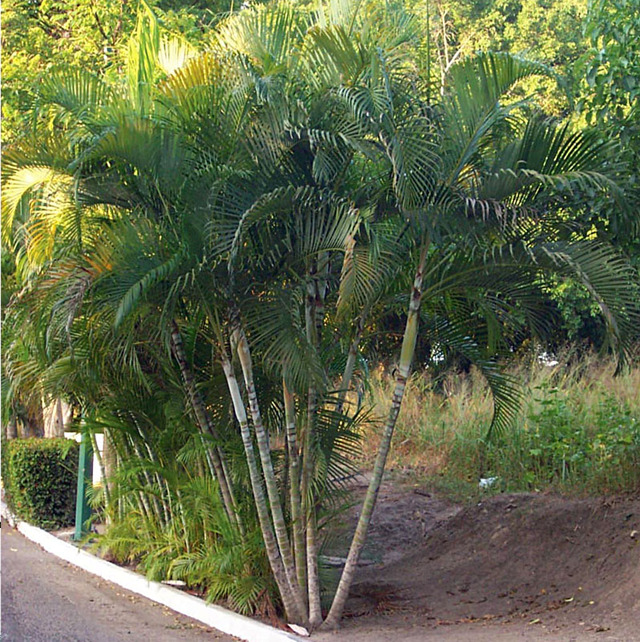
Butterfly Palm (Dypsis lutescens)
Family: Arecaceae
Alternate Names: Golden Cane Palm, Yellow Palm, Golden Feather Palm, Madagascar Palm.
Use: The butterfly palm is an attractive landscape plant. The slender tree has many trunks, and with age, multiple crowns. It is also popular as an indoor plant but is somewhat difficult to grow there. While shrub-size in cool climates, it grows to 30 feet in warmer climates.
Flowers: The flower stalk emerges from below the crown shaft. Its yellow flowers are followed by fruit, which ranges from pale yellow to nearly black.
Cultivation: The butterfly palm shows fast growth, requires thinning excess suckers to create a more attractive, open, cluster. Needs well drained rich soil, kept moist. It flourishes in sun or part sun. This plant is shallow-rooted and fairly salt-tolerant. Its stalks are yellow-green and its leaves are pointed, in contrast to the similar MacArthur palm.
Propagation: This palm is propagated from seed. Alternately, the suckers detached in thinning can be used to create new clumps.
Contact

